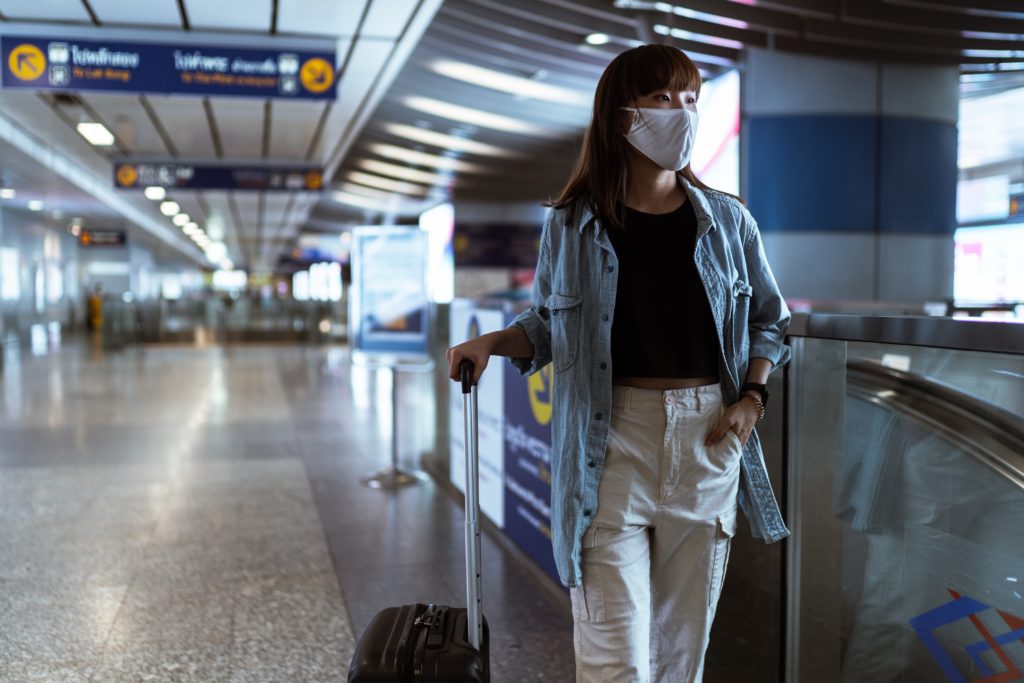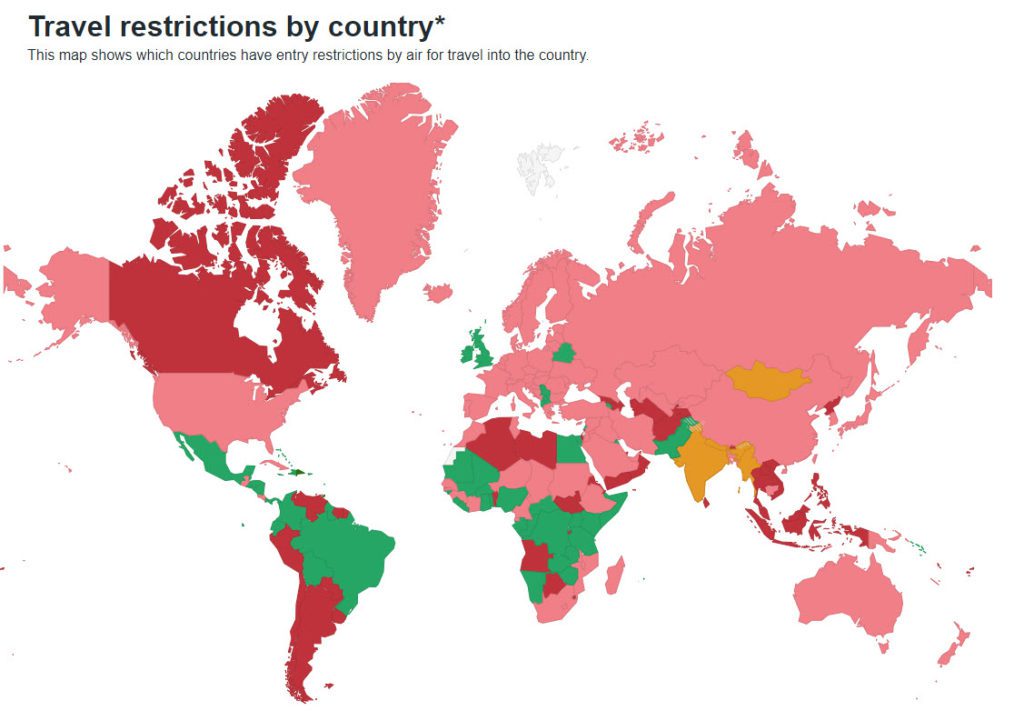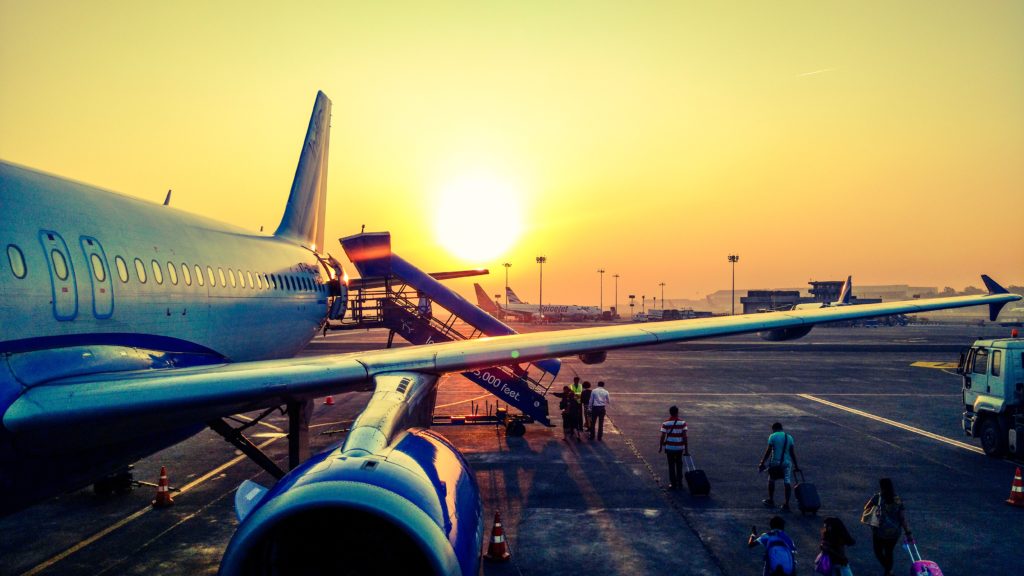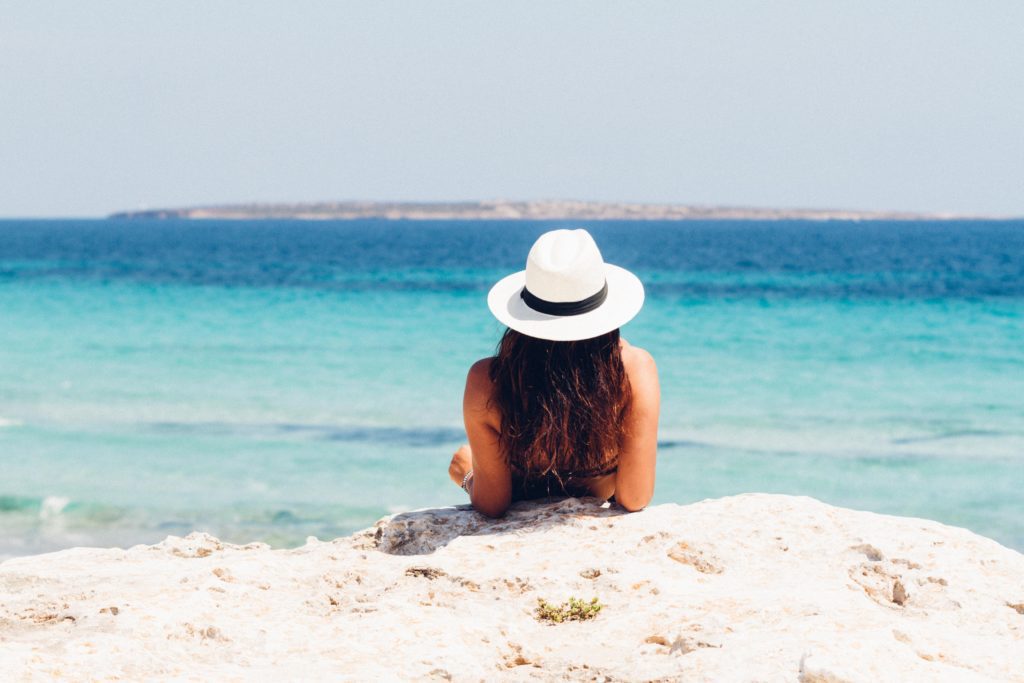Are you one of the many people who want to start traveling, again, but are thinking that you and the world aren’t ready yet?
While traveling during a global pandemic is a personal choice, you can travel internationally safely and responsibly, even in 2020! I have and continue to do so.
All you need is a little bit of moxie, some online research, and good organization skills because its not as easy to book that trip as it was before.
Here are 10 steps to help plan your trip and to make you feel safe, be safe, keep others safe, and use some of those much-needed vacation days.
By the way, if you’re not willing to wear a mask, listen to airport/airline personal, and follow local government guidelines, please stay home.

IS IT SAFE TO BE IN AN AIRPORT AND ONBOARD A PLANE?
Actually, I feel safer in the airport than at my grocery store. Airports have much fewer visitors than ever before. This makes social distancing easy at the check in counter, security lines and while boarding. It also makes for a far less stressful travel experience.
Onboard the airplane, I also felt safe. Most international destinations require arriving passengers to have a negative PCR COVID-19 test result, which means that most, if not all the passengers onboard the flight have recently tested negative for the virus.
I flew Delta on all my flights and the middle seat was blocked. My flights were only 50% full so I felt as though I had plenty of space between myself and others.
The plane was spotless, although I did wipe down surfaces at my seat with disinfectant wipes as a double measure. But this is a habit I have long subscribed to.
According to a recent study by the U.S. Department of Defense and United Airlines, the risk of COVID-19 exposure on planes ‘virtually nonexistent’ when masked.
It’s also been reported that airlines recirculate and filter the air onboard the plane every three minutes on average, which is supposed to filter out any airborne viruses including COVID-19.
STEP 1: MAKE A LIST OF COUNTRIES THAT ARE ALLOWING INTERNATIONAL VISITORS AND WHERE YOU WANT TO GO.
I use Kayak’s Travel Restriction by Country webpage. It’s easy to use and their color coated global map allows you to quickly see which countries are open (green), open with restrictions (light red), closed (dark red), or will be opening soon (yellow).
The map is fairly current and also has detailed requirements for entry. You can toggle a drop down to select the country you are interested in, and get all the necessary details. Get out your pen and paper (or your spreadsheet) and start your list.

STEP 2: IS A 14-DAY QUARANTINE REQUIRED?
Some countries still require a 14-day quarantine even with a negative PCR COVID-19 test, so unless you plan on staying for a while, you’ll probably want to cross these countries off your list.
If you click into Kayak’s Travel Restrictions by Country, you can see which countries require a 14-day quarantine.
STEP 3: CAN YOU FLY THERE?
Just because a destination is open, it doesn’t mean the airlines have restored service, yet. Check your normal sources and see what’s available for your dates.
If there are no flights, or the only flights are those with three or four connections, I suggest calling your travel agent to have them take a deeper look and see when service will be restored to that destination.
If you don’t have a travel agent, I recommend LargayTravel.com They are highly skilled in this area.

STEP 4: HOW IS THE DESTINATION DOING WITH COVID-19?
Many destinations are experiencing low infection rates and are performing far better than others, including the U.S. If you are the prudent type, you may want to consider traveling somewhere with a low or almost zero infection rate.
You can find information on infection rates on Google by searching for, COVID-19 rates. Google has an entire interface that provides all the necessary information, and you can easily search by country.
STEP 5: DETERMINE THE NUMBER OF DAYS PRIOR TO ARRIVAL, YOU ARE REQUIRED TO SHOW A NEGATIVE PCR COVID-19 TEST
Most countries require a negative PCR COVID-19 test to enter except Mexico and the Dominican Republic.
Countries that require a negative PCR COVID-19 result will be the safest for you, especially onboard your flight, since everyone onboard will have received a negative result in the past week or less.
Entry requirements vary by country. Typically, a negative test is required within 48 hours, 72 hours, 96 hours, 5 days, 7 days and on the rare occasion, 10 days, prior to arrival.
Depending on where you live, getting your test result back in time for a destinations entry requirements, will help you determine which countries you will be able to travel to. Common turnaround times are three days, but can be longer.
I suggest choosing destinations where you need a negative test result five or more days prior to arrival. It will be less stressful this way.
Keep in mind, that for most destinations, you’ll need to submit your negative test result online, the day before you travel, which means you essentially lose a day.
It’s a good idea to look at your calendar when scheduling your departure to ensure your testing facility will be open on the day you need to take the test.
Please note that most countries do not accept a rapid COVID-19 test for entry. The PCR test is the one with the swab which goes in your nose.
If you choose to travel to a country that doesn’t require a test, I do recommend that you get one for your own knowledge.
Getting tested prior to traveling is the right thing to do to keep the local population safe but also because you may be tested upon arrival, and if you are positive, you’ll have to quarantine for 14-days. Get tested to avoid unwanted surprises.
STEP 6: DETERMINE IF THERE ARE ANY RESTRICTIONS IN YOUR STATE WHEN YOU RETURN?
Some states require you to quarantine at home for 14-days if you travel internationally.
Check your state’s website for travel restrictions. For those of us already working from, the quarantine may not be a big deal.
If you’re traveling with school age children, and they are attending class in-person, they may have to quarantine for 14-days, and move to online learning. Also, check with your employer if they have a travel ban in place.

STEP 7: DETERMINE WHETHER YOU WANT TO STAY IN A HOTEL OR PRIVATE HOME? THEN SEE WHAT’S AVAILABLE
Even though some destinations are open, many or some hotels are not. Your best bet may be to find a private home or villa. This can be a good choice as you’ll often find amazing properties in prime locations with incredible views and luxury amenities, at a great rate. On my two recent stays,
I had a beach front property, and beautiful home on 150 acres in the mountains. Social distancing at both locations was not a problem and it would have been delighted if I never left either of these properties.
STEP 8: THINK ABOUT WHAT YOU’LL DO ONCE YOU ARRIVE
To minimize exposure to yourself and those around you, you may want to choose destinations with lots of outdoor activities, that are not in a city.
Think beaches, mountains, or the countryside. This will ensure you have plenty to do, without relying on businesses, bars, and restaurants to be open and without having to be within close proximity of others.
Try some activities which you’ve never done before! On my trips I went fly fishing, hiking, white water rafting, scuba diving, snorkeling, and visited a wolf sanctuary. I also went to as many deserted beaches as I could find, which was easy. Even the most popular beaches might be empty.

STEP 9: BOOK YOUR FLIGHT AND ACCOMMODATION
Most flights will allow you to change your ticket for any reason with no change fee. So, worst case scenario is you’ll have a credit with the airline if you need to change your trip.
Many of the flights are flying at a significantly reduced capacity which means you might be able to find a seat only days prior to departure if you want to wait. If you wait, there is a risk that you’ll pay more.
Some homes and villas will allow you to cancel up to the day before your arrival with no penalty. Some require 15 or 30 days. The type of cancellation policy offered may help you decide which place to stay at.
If the home or villa has an unattractive cancellation policy, don’t be afraid to ask the host to modify it for you to whatever your most comfortable with. Whatever they decide, just get it in writing.

STEP 10: DECIDE WHERE TO GET YOUR PCR COVID-19 TEST
I recommend figuring out where you are going to get your PCR COVID-19 test at least a week before you need to. Tests can be performed at a local clinic, doctor office, lab testing facility, or hospital.
There are new services that have appeared online that promise quick turn-around times for PCR tests, within 2-3 days. Search online and see if any of these services will work for you.
Whatever you do, I recommend calling your primary care physician, tell them you need a test for travel, and see what they say and if they can write a prescription for you. I found that your doctor can sometimes get quick turnaround times. If not, call the local clinics and see what they can do.
Again, most countries do not accept Rapid tests. Make sure the test you will be receiving is a PCR test.

